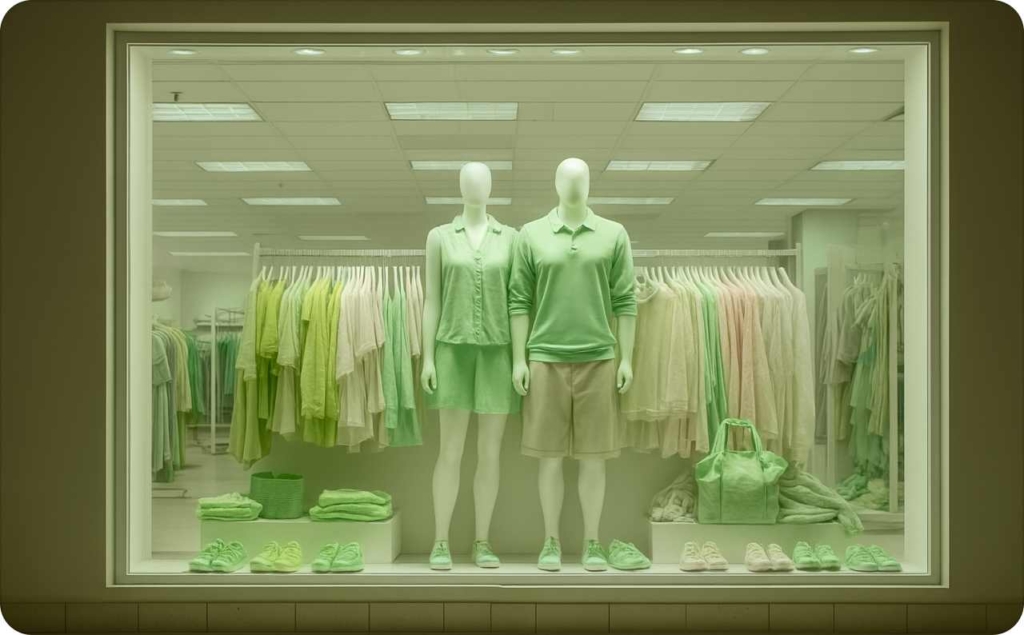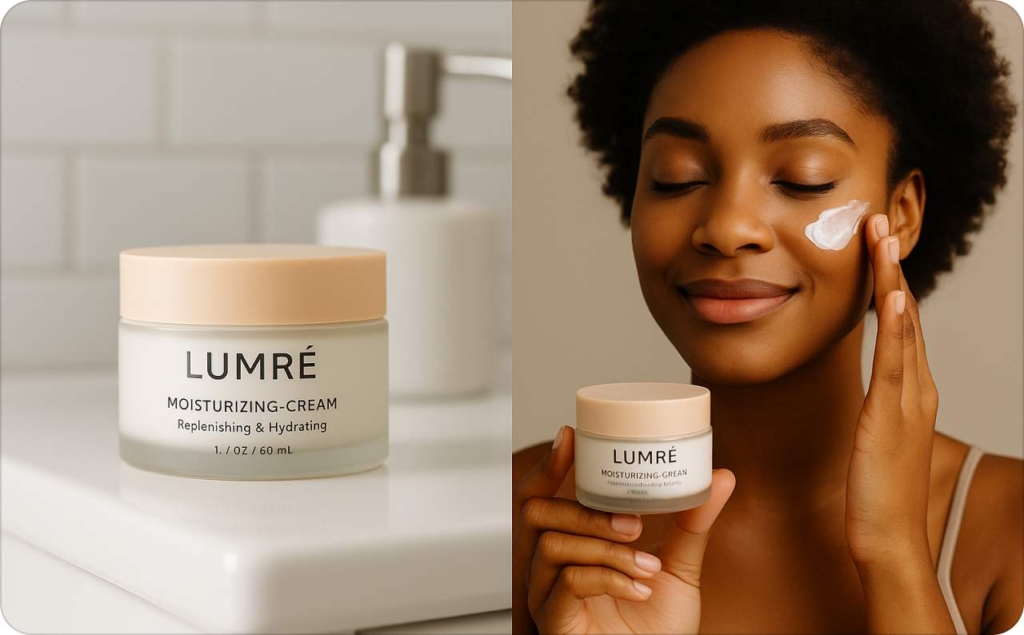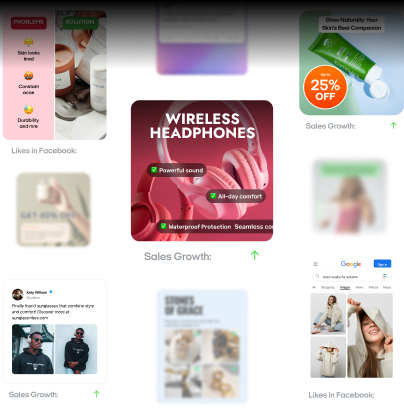UGC ads for social media: from zero to high-selling ad campaign in one day
Can UGC ads really transform your sales overnight? Zeely AI shows how to build high-performing social media campaigns fast, turning authentic content into revenue in a day.
Glossy ads glide by in 0.6 seconds — the average swipe before boredom sets in. But show a real customer on screen, and everything changes. Watch time doubles. Trust kicks in. And your ad costs? They drop fast.
For small business owners, UGC is a game-changer. Instead of spending thousands on polished creatives, you can turn everyday customer posts into high-performing ad campaigns. Brands like GoPro have already proven it works — with a 60% sales jump after running campaigns built entirely from fan-made content.
And the opportunity is only growing. Social commerce, fueled by UGC, is on track to hit $2.9 trillion by 2026. That means people aren’t just engaging with this content, they’re buying straight from it.
In this guide, we’ll break down what UGC ads are, why they outperform traditional ads, and how to use them to grow your business. You’ll get authentic content examples, step-by-step strategies, and everything you need to launch smarter, more genuine campaigns.
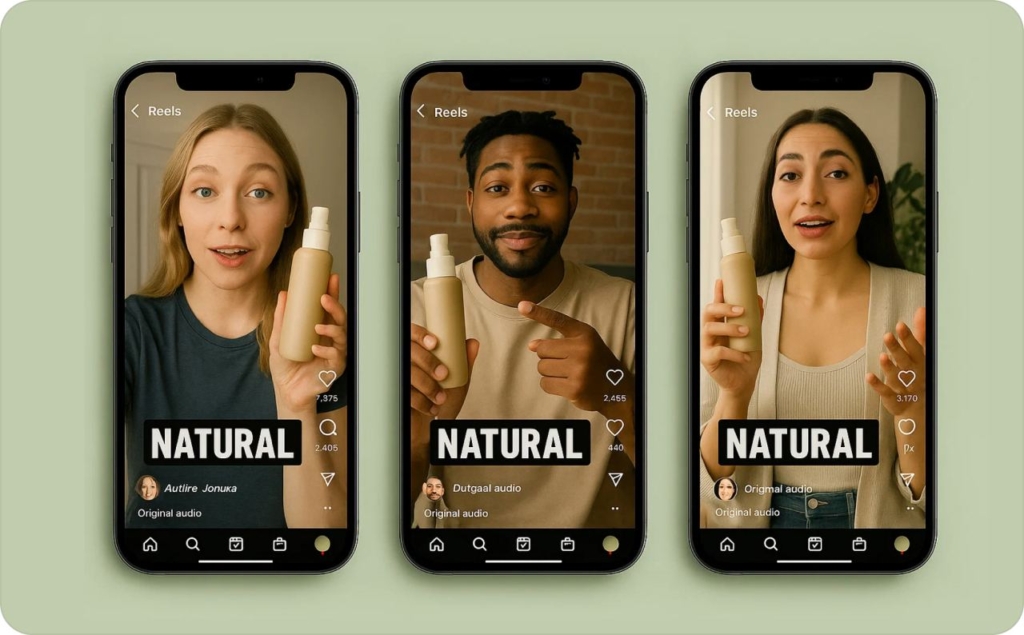
Introduction to UGC ads: jump-start your small business marketing
If you’ve heard the term but aren’t sure what it means, here’s the short answer: UGC ads are paid promotions built from user-generated content — photos, videos, or reviews posted by real customers.
Think of them as the opposite of influencer ads. Instead of paying one person to create curated content, you’re using authentic posts that everyday people share about your brand. Because they’re created by genuine fans, UGC ads feel relatable and refreshing.
Let’s make it concrete with a quick example. Suppose you run a small bakery, and a customer tags you in a story showing your cinnamon rolls. With their permission, you turn that clip into a sponsored Instagram post.
It’s easy on your budget, grabs attention, and doesn’t look like a typical ad. In fact, 92% of consumers trust user-generated content more than standard advertising — so real voices can instantly build digital trust.
To get started, check your brand tags and review sites for customer posts that show genuine enthusiasm. Then ask the original poster if you can repurpose their content.
Why UGC ads matter for your bottom line?
UGC ads can drive up to 144% more conversions while also trimming production costs. You avoid the high expense of elaborate photo shoots and editing.
Instead, you lean on relatable content from actual customers who already love your products. This approach not only boosts brand trust but also pushes up click-through rates while lowering cost-per-click.
For instance, imagine running an A/B test between a sleek commercial and a short user testimonial. The personal, user-generated ad may surpass the professional spot, often for a fraction of the cost.
Chances are, the user-generated version will transform how viewers respond. Over time, you’ll see stronger ROI, more loyal fans, and a marketing strategy that’s more like a community spotlight than a sales pitch.
UGC ads benefits you can see and measure
If your brand doesn’t feel trustworthy, people won’t buy from you. That’s why UGC ads stand out: they rely on sincere, unfiltered moments from real customers, not polished actors. This genuine approach says, “We have nothing to hide.”
Take Apple’s #ShotOniPhone campaign as an example. Everyday users snapped photos on their iPhones, and Apple showcased those shots worldwide.
No fancy models — just regular people proving the camera’s power in a relatable way. According to EmbedSocial, shoppers often trust this kind of real content more than scripted ads. When they see peer reviews and authentic photos, they can picture themselves in the same situation.
So how do you make this work for your brand? Look for customer posts that show honest product use. If you sell hiking boots and a customer shares a video of a weekend trek, ask if you can feature it.
By highlighting user voices — the people who actually buy, wear, or use your product — you give your brand a credibility boost that no staged ad can match.
Want bigger returns on less spending? Go UGC
If you’re fed up with ads that burn through your budget, UGC video ads for e-commerce might be your best move. They skip pricey photo shoots and big production crews.
Instead, they focus on real people who already own and love your products. That’s not just budget-friendly — it also drives results. Audiences respond to genuine images, authentic content, and videos because they feel less like ads and more like shared experiences.
If you notice a user testimonial outperforming your studio-shot commercial, move your ad spend toward that format.
Measuring performance is key. Track CTR, CPC, and overall ROI. If those numbers climb when you use customer-generated posts, invest more in that approach.
Over time, you’ll see how authentic content saves you money while boosting your returns.
Need more engagement? UGC ads ignite social proof
If your ads aren’t getting clicks or comments, UGC ads could turn things around. By highlighting peer recommendations and community-driven content, you boost engagement in ways a glossy commercial can’t.
People see others like them enjoying your product, so they’re more inclined to trust — and share — your message.
Consider the Starbucks White cup contest. Starbucks asked customers to doodle on their cups and post the results.
That challenge led to an avalanche of fun, interactive content that fueled social media chatter. This kind of social proof sparks a chain reaction where every fan post can inspire someone else to join in.
In fact, 78% of shoppers say they feel more confident about a purchase when they see user-generated content.
Want to drive interactions for your brand? Prompt buyers to share a quick photo or story right after they order. Then showcase the most relatable submissions in your ads.
When people spot genuine fans, they’re more likely to engage — turning casual viewers into an active community that energizes your entire marketing strategy.
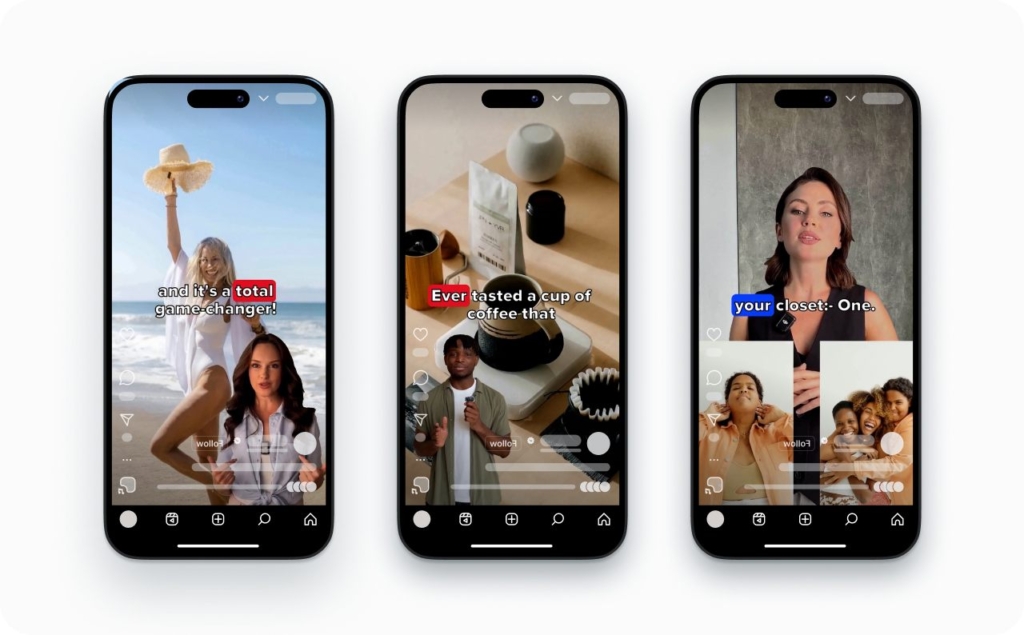
UGC ad format that will best fit your business
You already know UGC ads can boost trust and cut costs. Now, it’s time to see these ads in action.
Each platform offers its own way of showcasing user-generated content, so choose the format that’s right for your audience. Let’s explore UGC video ad types, influencer collaborations, and static UGC — all designed to keep people engaged.
Want to use video? Here’s how to get real customer clips that work
Short-form videos dominate on TikTok, Instagram Reels, and YouTube Shorts. These platforms crave engaging, viral-ready clips that feel like everyday posts, not ads.
That’s why UGC video ads can stand out. A quick fan testimonial or a brief how-to shows your product in a genuine light and often earns higher watch-through rates than glossy promos.
To get started, ask loyal customers to film short clips. Then optimize each video for the platform.
Tools like CapCut or InShot help with trimming footage and adding captions. Once you’ve got a solid clip, repurpose it across your other channels.
GoPro, for example, spotlights fan adventures on Instagram, YouTube, and its own site. If you’re aiming for TikTok UGC advertisements or Instagram Reels UGC best practices, keep each video short, focus on trending sounds, and include simple on-screen text.
Thinking about influencers? Here’s how to do it the right way
Sometimes, user-generated content gets an extra boost when you team up with micro-influencers and content creators who already have a loyal fan base. They bring authentic endorsements plus built-in reach.
Instead of hiring a big-name influencer, you can collaborate with people who genuinely use your product and speak your audience’s language.
First, find creators who align with your niche — maybe they post product reviews, share lifestyle tips, or focus on a specific hobby. Make sure their tone matches your brand, then let them weave your product into their usual content style.
That kind of influencer UGC ad feels like a natural story rather than a paid promotion. Brands like Nike connect with community athletes, while Glossier highlights genuine fan reviews.
Don’t forget legal details, though. Even if a post is user-generated, it must be labeled clearly when it’s sponsored. When done right, influencer-based UGC turns curious onlookers into loyal fans.
Got great customer photos? Turn them into high-performing UGC ads
Video isn’t your only option. Static UGC ads — like customer photos, testimonial graphics, or carousel images — can work just as well on platforms like Facebook or Pinterest. If a happy customer shares a mouthwatering shot of your signature dish, see if you can feature it in a carousel ad.
Aim for clean, well-lit photos with minimal text overlays. Consistent branding and cohesive layouts can lift click-through rates. UGC video ads with testimonials earns 2x higher CTR than standard brand images. By tapping into real visuals, you build social proof and show new shoppers what your product looks like in everyday life.
Which UGC format fits your brand best?
UGC video ads are best if your audience gravitates toward TikTok or Reels and loves short, snappy clips.
Influencer UGC ads shine when you want credible voices and easy access to ready-made communities.
Static UGC ads thrive on visual platforms like Pinterest and Facebook, where photos and testimonials speak volumes.
How to build UGC ads that actually work for your business
Now that you’ve picked the best UGC ad format for your brand, it’s time to put your plan into action. You’ll need to set smart goals, know your audience, collect great content, and design ads that feel real but still look professional. Let’s walk through it step by step so you can drive real results — without wasting time or money.
Start with a clear goal and the right audience
If you don’t know what you’re aiming for, your UGC campaign might miss the mark. That’s why it’s so important to pick a goal, track the right numbers, and decide who you want to reach.
Maybe it’s Gen Z on TikTok, or Millennials scrolling Instagram. Your strategy should match how they spend time online. Choose one or two key results to focus on — like getting more sign-ups or lowering your cost-per-click.
Then take a closer look at your audience. Who are they? What do they care about? The more specific you are, the less money you’ll waste. Think about targeting “first-time dog owners” instead of just “pet lovers.”
Once you have a clear goal and a solid audience, figure out how you’ll measure success. Will you track shares, clicks, or conversions?
That decision will shape the kind of UGC you need. Want more sales? Use clips that show people using your product and loving it. And don’t forget your CTA — make it bold, clear, and hard to miss.
Find the best UGC without the headache
You don’t need fancy tools to find good content, you just need a smart process. Start by looking through social media hashtags, checking UGC platforms like StackInfluence, or simply asking happy customers to tag your brand. The more visible your ask is, the more content you’ll find.
Before you reuse anything, always ask for permission. A quick message or sign-off form is all it takes. It protects you legally and builds trust with your fans.
If you’re unsure, check out resources or talk to a legal expert. When you show respect for user content, people are more likely to share.
Now, sort through your options. Choose photos and videos that match your brand — bright, honest, and clear. Skip anything too filtered or off-message.
Great UGC doesn’t look perfect, it looks real. Once you’ve got your best pieces, you’re ready to move on to ad design.
Make your UGC ads look good without losing what’s real
Just because content is user-made doesn’t mean it can’t look sharp. You still want your ad to match your brand. Look at key UGC video trends and make your ads look good/
Start with the basics: your logo, your colors, your fonts. Then figure out how to blend it with the user’s style so it still feels authentic.
Showcase quotes in bold, easy-to-read text. Keep videos clean with smooth transitions and don’t overdo the effects.
If it’s a Reel, try placing a clear “Tap for Details” at the bottom. For carousels, use each slide to highlight a new angle or quote.
Want to show off your editing skills? Try a before-and-after. Take a raw user post and lightly polish it while keeping the heart of the story intact.
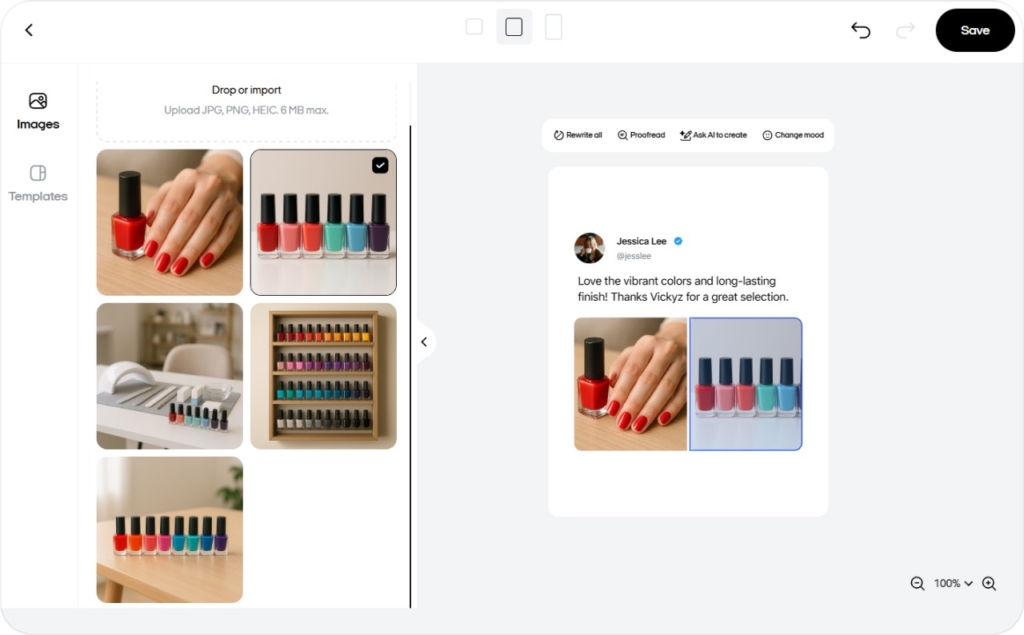
Use these platform-specific UGC strategies for real growth
With your goals set and your creatives ready, it’s time to apply them where it counts. Each platform has its own rules for making user-generated content shine.
Below, you’ll learn how to create native-style ads using short-form video, long-form testimonials, and static visuals — all designed to fit the platform and engage your audience.
Make TikTok spark ads and Instagram reels work for you
Short-form video works best when it feels natural. Both TikTok and Instagram are built for quick, fun, and engagement-driven clips.
With TikTok Spark Ads, you can turn existing user content into native ad formats that don’t interrupt the feed. On Instagram Reels, simple edits, trending audio, and fast visuals help your content blend in while still catching attention.
Aim for 15–30 seconds of platform-optimized content. Use real clips of customers using your product — unboxings, demos, or everyday moments. Add short text overlays like “Tap for Details” on Reels, or use TikTok’s native CTA button without overdoing it.
Don’t forget, you can mix organic and paid UGC approaches. Encourage fans to post with a branded hashtag, then boost top-performing posts using Spark Ads.
These platform-specific UGC strategies help your videos feel natural and still deliver results. By adapting to what users expect, your brand feels more like a peer than an advertiser.
Grow your reach with YouTube testimonials and unboxing ads
If you want to tell a longer story, use YouTube. It’s perfect for video testimonials, unboxing videos, and deeper reviews that build brand trust. People come to YouTube to learn and explore — not just scroll — so they’re more open to watching content that feels real.
To make it work, focus on authentic unboxing experiences and user stories. Ask a customer to record their reaction as they open and use your product. Or stitch together a few short clips into a narrative.
Start strong. You only have a few seconds to hook viewers. Use tight edits, clear intros, and direct visuals. Include captions or highlight moments with quick cuts and bold titles.
A campaign example on Billo.app showed that customer review videos helped reduce bounce rates by 30% on product pages linked from YouTube.
Want more results? Add a simple CTA at the end. “Click to shop,” “See the demo,” or “Try it now” keeps things direct and actionable.
Use Pinterest and landing pages to boost conversions
For still images and visually compelling posts, go with Pinterest or your own landing pages. These are great places to show off authentic visuals, like fan photos, reviews, or before-and-after results.
On Pinterest, pin real customer content with short captions and a direct link to your product. Users often save posts for later, so keep your visuals clean and your copy short. This Pinterest UGC strategy works especially well for beauty, food, fashion, and home brands.
Your landing page is where most buyers decide if they’ll click “Add to Cart.” Adding UGC on landing pages — such as user photos near your product details or a quote below the buy button—can build social proof right when it matters. A study from Instapage found that conversion rate optimization with UGC improved checkout rates by 25%.
To make it work, integrate UGC into your layout. Feature 1–3 real testimonials, make sure the visuals match your brand colors, and keep the call-to-action clear. Your page should look engagement focused, not cluttered.
A simple strategy you can use to start and launch UGC ad campaign in one day
You’ve seen how user-generated content can boost trust, cut costs, and work across platforms — from TikTok to your landing pages. But if you’re feeling overwhelmed by all the info, that’s okay.
Let’s summarize what matters most and give you a simple plan you can implement right away.
Step 1: Start by choosing what you want. Maybe it’s more clicks, more conversions, or stronger engagement. Once that’s set, pick the platform your audience uses most. Focus your effort there first.
Step 2: Look for authentic content. That could be a product photo, a real review, or a short video of someone using your product. Make sure you ask for permission before you share.
Step3: Design your ad to match your brand’s look — use clean visuals and a strong call-to-action that’s easy to spot.
You don’t need a huge team or budget to make this happen. Zeely AI is a smart tool that helps you turn your product link into ready-to-run ads.
With its UGC video ad generator, you can easily repurpose content into mobile-optimized clips using pre-built templates, captions, and CTA buttons — right from your phone.
Step4: Start small. Test one campaign. Track a few simple KPIs like clicks or video views.
Step 5: Then tweak your strategy based on what works. UGC isn’t about perfection, it’s about relatable content that builds connection.
As your campaigns grow, tools like Zeely make it easier to stay consistent and keep scaling. The more you lean into real voices, the more your UGC ad strategy will feel trustworthy.
And that’s exactly what gets people to stop scrolling and start clicking.
Also recommended

